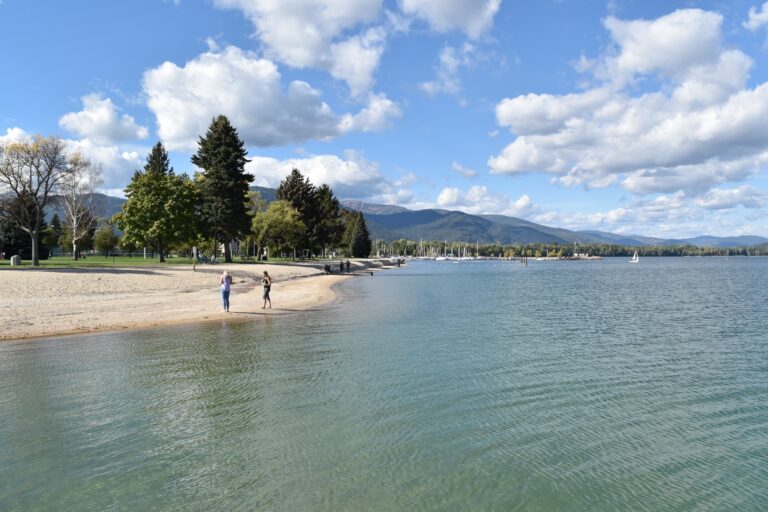October is a great time of year in Spokane if you like free fruit. There are apples, pears, and plums aplenty along the roads of the region. Most of this fruit will rot on the tree, so if you like lazy country rides and don’t mind hauling a bit of a load, then you should try a fruit foraging ride and picnic this month.
WHERE’S THE FRUIT?
It’s everywhere. You really don’t need to take a 30-mile ride through the country to find trees heavy with fruit. As you tool around the city, keep an eye out for public-looking or public-accessible fruit trees. But before you run off and start shaking down every fruit tree in town, you should approach all trees with the assumption that they are probably on private property and act accordingly. Ask property owners if you can pick the fruit from their tree. Some may be surprised that you want it. And some may say no.
But as you get out of the city and explore the rural roads of the Palouse, the foothills of Mt. Spokane, Wildrose Prairie, and other sparsely populated areas, you may not easily find an owner. And the further into the country you ride, the more likely you will find old orchards that have been long abandoned. In these cases, just by picking the fruit that hangs over the road into the public right-of-way you can fill your panniers. After you see ancient abandoned fruit trees and their half-dead, overgrown tangle of branches, trees that are well tended are obvious. Avoid the tended trees.
As for identifying good rural routes, look at a map and pick a rural highway, like 395, 195, or 27. Then watch for roads that branch off into loops at the base of big hills, mountains, or other natural barriers. Plan a nice loop and wait for the perfect trees. Apples are everywhere. Plums tend to be mostly urban. Pears are rarer and are hard to find in perfect ripeness.
HOW DO I HAUL THE FRUIT?
Depends on what you want to do with the fruit and what you have. Generally, the fruit on the trees that are “forageable” is pretty beat up already. So unless you’re trying to preserve the fruit for a still life piece, just chucking the fruit into panniers and baskets works well. Fruit is mostly water. And water is heavy. As much as possible, try to keep the load low. Panniers on a front, low-rider rack make for a great fruit-hauling solution.
WHAT DO I DO WITH THE FRUIT?
Apples and pears make great apple sauce. Plums are great dried. Here’s a simple method for preparing lots of apples and pears. The recipe is really just for applesauce, but throwing in a few pears and even a plum or two makes it yummier.
OTM’S FORAGED FRUIT SAUCE
Ingredients:
- Many pounds of apples and/or pears. A mixture of sweet and tart is great.
- Sweetener. You can use sugar, brown sugar, agave, or any other sweetener you like.
- Spices, such as cinnamon, nutmeg, ginger, etc.
Method:
- Prepare the fruit by cutting it in quarters and cutting the worms out. You’ll likely not get every last wormhole (or worm) out of the fruit, and that’s ok. Seeds, peels, cores are all okay too. If you are adding plums, make sure you pit them.
- Toss the fruit quarters in a big pot. Add an inch or so of water to the bottom of the pot, cover it, and put the pot on medium-high heat.
- Cook the fruit until it’s soft, about 40 minutes or so, and then cook it a bit more. You should be able to easily break up the fruit with a wooden spoon.
- Run the fruit through a food mill. You can buy these cheap at any kitchen store. You can also spend a bunch on electric versions. A food mill will separate the seeds, skin, and cores from the fruit. When you’re done running the fruit through the mill, you’ll end up with a watery applesauce-like consistency.
- Put the fruit sauce in a smaller pot and cook it on medium a bit to get some water out of it. If you like apple butter, continue to cook the sauce for a couple hours until it colors a bit and becomes thicker. Be careful not to burn it.
- Sweeten and spice to taste. Take it easy on the spice, which will become more pronounced with time.
- Eat it with sour cream on top of French Toast. Or if you’re a canner, process it per the Ball Blue Book method and enjoy it all winter long.
John Speare grew up and lives in Spokane. He rides his bike everywhere. Check out his blog at http://cyclingspokane.blogspot.com.













